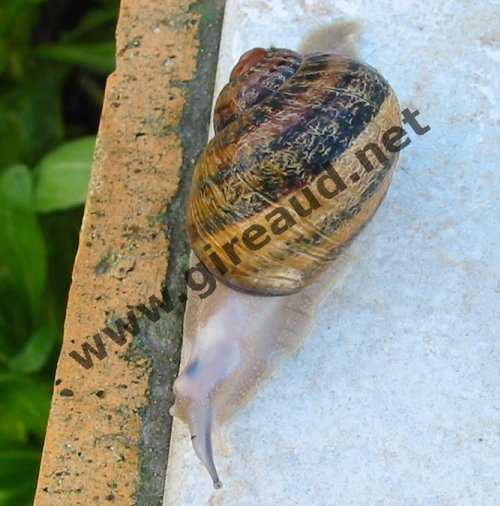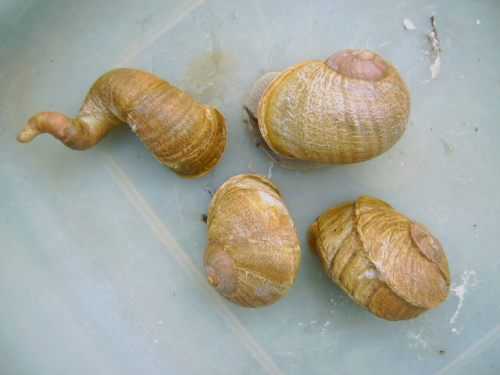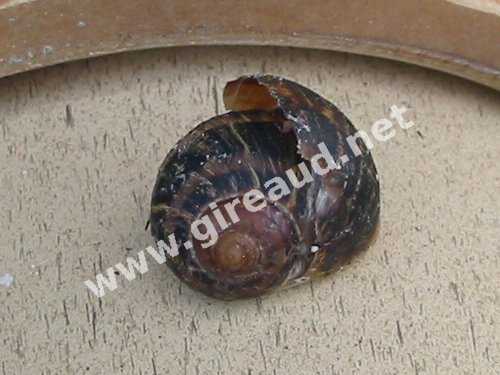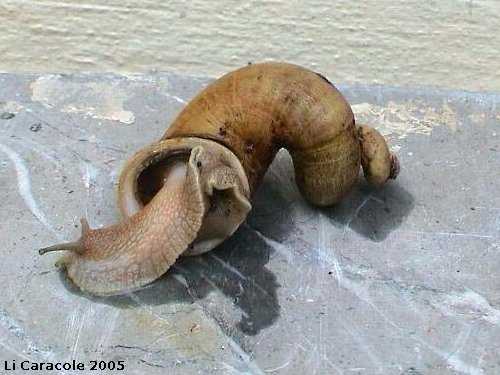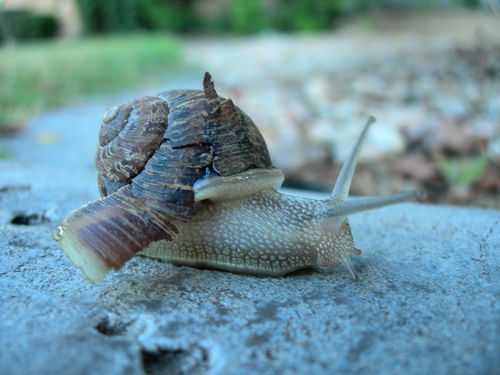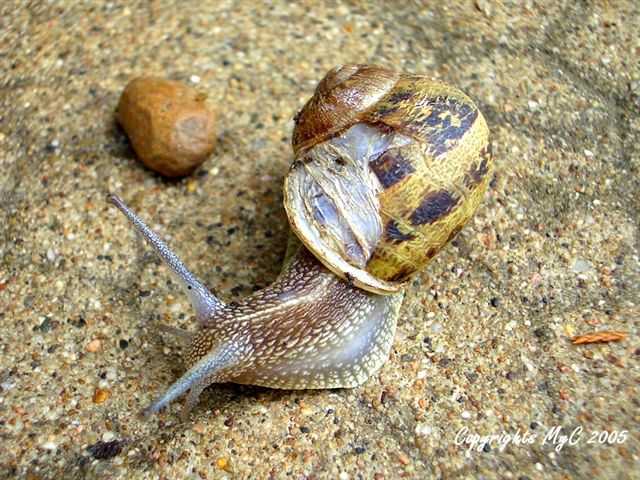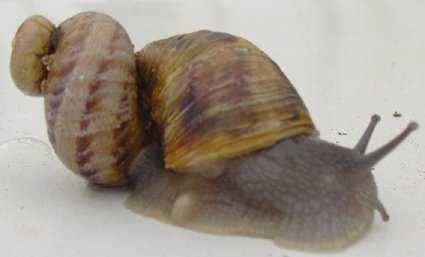|
Last
update: 12/27/2006
I
will divide this large chapter in 6 categories:
A - Predators:
1
- The Flying predators:
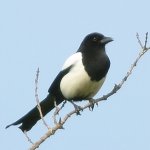 | 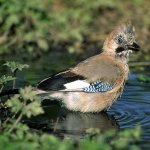 | 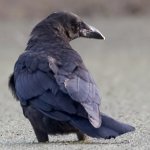 | 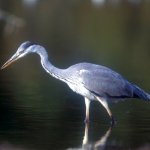 | 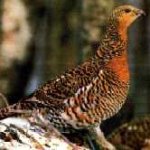 | 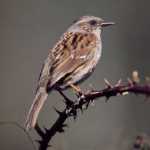 | 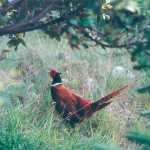 | | The magpie | The geai | The corbel | The
heron | The
grouse | The
dunnock | The
pheasant | 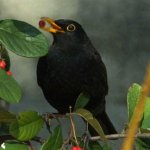 | 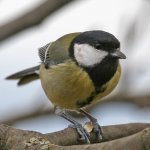 | 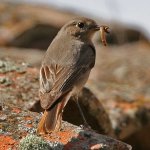 |  |  | 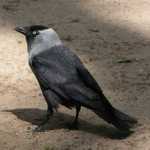 | |
| The
blackbird | The
titmouse | The
redstar | The owl |
The falcon | The jackdaw | |
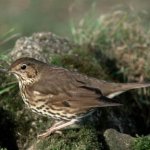 | 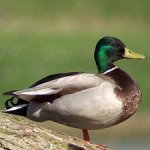 | 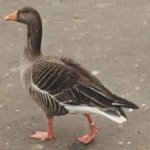 |  | 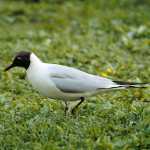 | 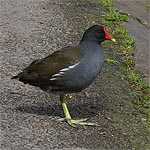 | |
| The
thrush | The duck |
The goose | The owl | The black-headed
gull | The
moorhen | |
The most effective means for fighting
against these birds, is to install a net.
It’s the same type of net which we puts above the
cherry trees or the strawberry plants for protect the fruits from the
starlings. | 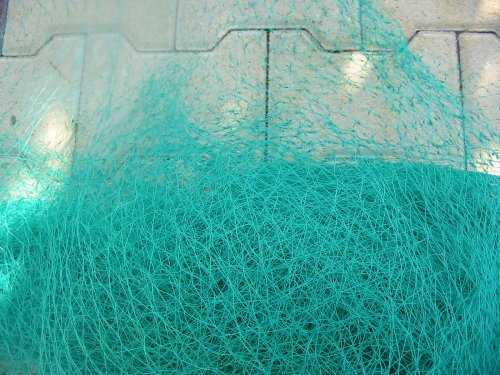 |
2 - The
terrestrial predators:
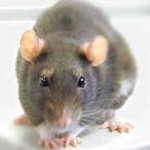 | 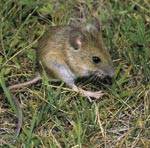 | 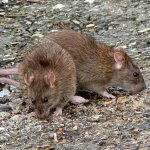 | 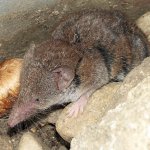 | 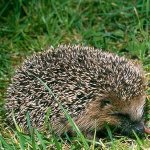 |  | 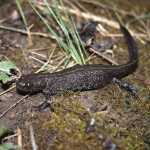 | | The rat | The mulot | The surmulot | The shrew
| The hedgehog | The dormouse | The newt |
 | 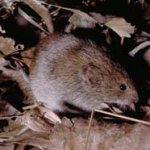 |
 | 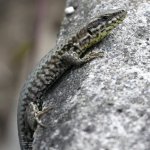 |
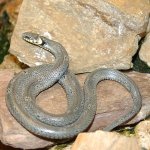 | 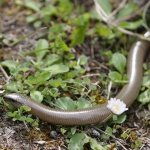 |  | | The mouse | The field vole | The lerot | The lizard | The grass snake | The slow worm | The rabbit |
 | 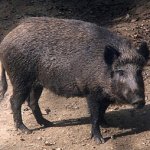 | 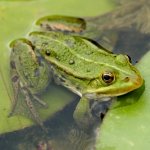 | 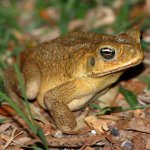 | 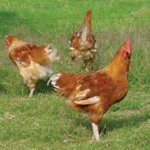 |  | |
| The
badger | The
wild boar | The
frog | The toad |
The chicken | The fox | |
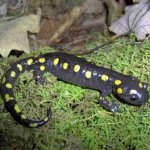 |  |  |  | 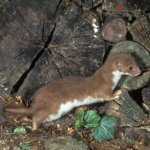 | 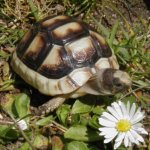 | |
| The
salamander | The
long pitchfork | The
fitchet | The
marten | The
weasel | The
turtle | |
All
these predators (except snakes) can be captured with this kind of trap
which I often use. The hedgehogs, clamping plates and frogs are
slackened in another place.
Think of adopting a cat: it’s really effective!!! |
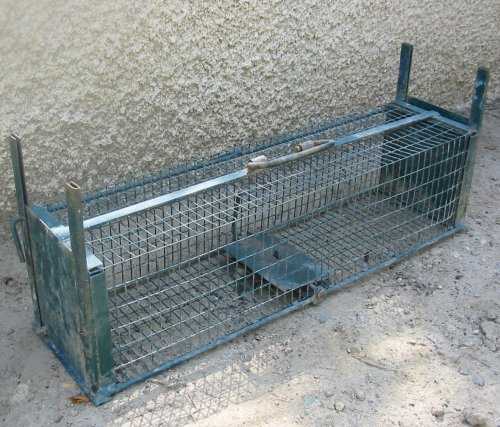 | For
rats, I use 2 types of poisons which I put in a tube PVC. That protects
the pellets from rain water, and the hedgehogs cannot eat some.
Personnaly, I don’t use rat poisonned traps,
it’s because I don’t want expose cats and childs. |
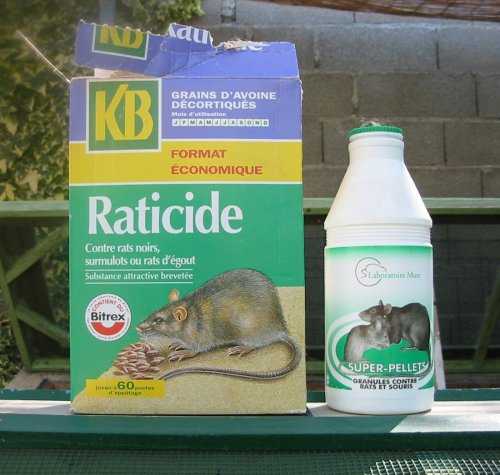 | | The
"nibbled" apex of the shell is a sign characteristic of an attack of
rats. | 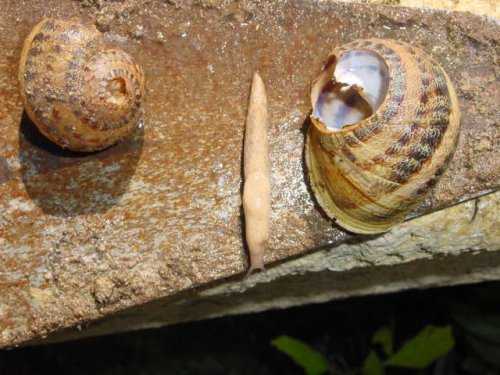 |
The
largest predator:
- Who
spread pesticides which make me die ?
- Who puts in
his garden blue pellets which liquify me ? (the pellets, are of
Métarex, not droppings of Schtroumpfs!!)
- Who
buys nematodes to destroy me ? (on sale in all the good stocked
garden-centers)
- Who destroys my environment
(disappearance of the hedges, urbanization, construction of the
motorways, etc.......) ?
- Who collects me without
being concerned with my period of reproduction ?
- Who
stuffs me with Burgundian butter ?
- Etc .....
Who
am I ?
3 - The
invertebrates:
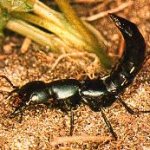 | The odorous staphylin
called "the devil" (Staphylinus
olens):
Length: 1.5 to
30 mm. This keen mollusc destructor is used to fight snails in the
gardens.
It has a frightening weapon in form of powerful
mandibles.
Don’t rub you her, or your
small finger will remember it!
|
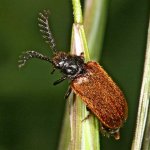 | The
male drile | The yellowish drile (Drilus flavescens):
The
female, always larviform, lives in the snail shells of which she eats
the contents. | 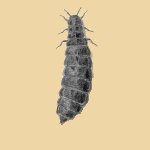 | The
female drile | 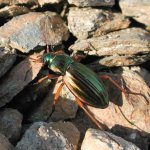 | Gilded
carabe (carabus
auratus) or "flower stand" or "vinegar manufacturer". |
|
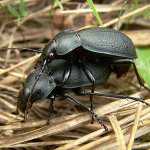 | Carabe
grained (carabus coriaceus)
25-37 mm, one of greatest Snail’s eater carabes. |
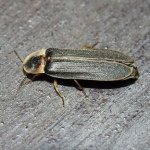 | The male lampyre |
The lampyre, towards
shining or firefly (lampyris
noctiluca):
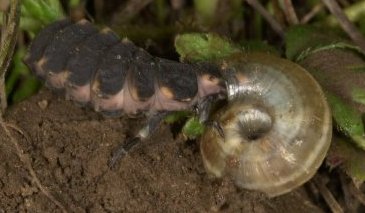 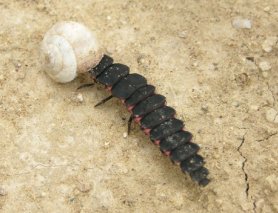
It bites its prey with
these appendices
and an anaesthetic substance as well as digestive enzymes injects to
him. There is thus an extraoral digestion, the prey is liquified and
lampyre drink this liquid. |
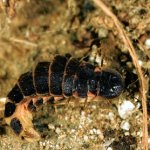 | The
lampyre female (15 à 20 mm) |
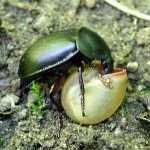 | Silphides
(silphidae)
| 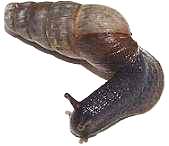 | Decollata (Linnaeus
1758) oR "The Snail Destroyer ruminated"
A
snail, predator of snails, that’s not very current!
Coming
from North Africa, them Rumina Decollata live from 1 to 1 year 1/2 and
lay approximately 200 eggs per year. Only one coupling is necessary to
produce fertile eggs. The eggs usually hatch in six weeks. Once
released, it’s the last time where you will have to spend
money
fighting snails. During a certain time, slugs and the snails will be
controlled without use of the toxic chemicals.
On
sale on Internet......
|
| And others ..... |
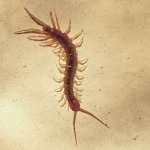 | 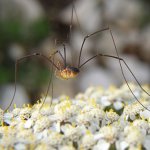 | 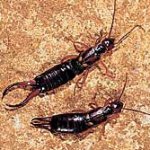 | 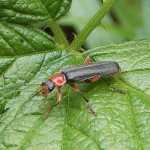 | | The lithobie | The opilion |
The earwig | The beetle |
|
B - The Undesirables:
The
undesirables are not predator as a such bus they are not snail
consumers.
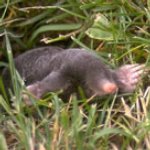 | The mole
The mole does
not eat snails but the small rodents borrow the galleries to penetrate
in the parks.
To fight against this plague, I
personally tested several methods. Two are really effective: the
mustard gas and the "detaupor".
The detaupor (photo):
the detonator kills the mole by effect of blast. It remains often on
the spot in small pieces.
The gas:
to insert in the gallery of chlorine for swimming pool ("shock"). On
this last to pour bleach then acid chloridric. A yellow gas heavier
than the air will penetrate in the gallery.
To stop the latter
with a small plank. |
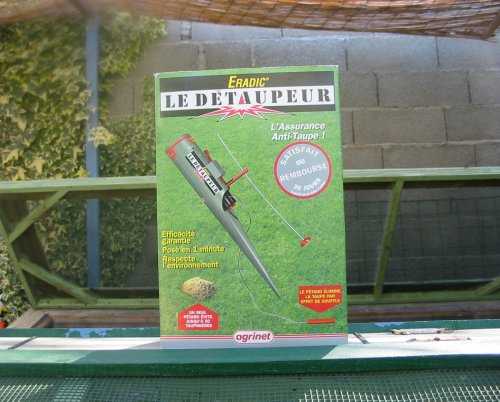 | 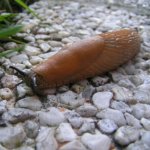 | The slug
The slug is regarded as undesirable because it
consumes the flour of snails.
For
fighting against these undesirable without chemicals, it's
necessary install a board or a paperboard on the ground. A
few
days afterwards, they are all stuck below. It's then enough
plunge them in a chlorinated water.
Trap with beer
is very effective but isn't selective for our dear snails. |
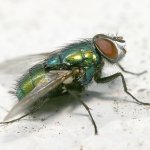 | The
fly
The
fly don't consume snails but she comes to lay on the dead snail.
Maggots develop and are quickly propagated in the park (danger to eggs
and the youthful ones!). The presence of flies and midges attest of a
lack of hygiene and are carrying bacteria contaminating food.
The
fighting means are numerous: - withdraw
often died snails, see quotidiennemt.
- install a UV
lamp (electrocution), but only inside.
- install
ribbons of glue. protect them from water!
- insecticides
during the underfloor
space.
|
C - The parasites:
| The riccardoella
| The riccardoella:
The riccardoella (limacum?) is an
acarina of snail.
White and visible with the naked eye, it
sucks the blood of its hosts making them sensitive to other parasites.
On
the following photographs, we can see them on a slug and a snail
(fulica).
Snail’s
breeders are particularly afraid by him, treatment : pulverization of
pyrèthre when the parks are in underfloor space.
| There
is also the biological fight: the hypoaspis
miles. This last is an
acarina predator (of which the riccardoella), larvae of
flies,
millipede, plant louses, etc.... Possiblity to treat with snails in the
parks. | 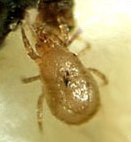 |
| Hypoaspis miles |
| | The angiostoma aspersae
(nematode)
Angiostoma
aspersae meets in an adult state in the snail pulmonary cavity where he
produces larvae. It is a big size nématode (more than 2 mm).
The
larvae place themselves between the body and the Snail shell and can
disunite the coat from the shell.
| | Phasmarhabditis hermaphrodita
| The phasmarhabditis hermaphrodita
(nematode)
It’s
a parasitic nematode which penetrates under the coat by the respiratory
opening: it’s there that the bacteria living in symbiosis
with
the nematodes proliferate causing the gastropod death.
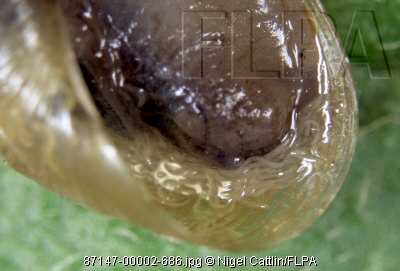 |
One
can distinguish in tranparence the nematodes devouring this
snail. |
Means
of fight
| Fasciola hepatica
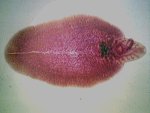
| The fasciola hepatica (the liver
fluke)
The
liver fluke (Fasciola hepatica),fasciolose trematode responsible, is a
liver parasite and bile ducts, prosperous in the liver’s
sheep
and is occasionally met in horses. Very frequent and very pathogenic in
ruminants, the fluke nourish imself by blood and hepatic
cells,
grows then lays its eggs. But eggs of flukes can’t hatch in
the
sheep liver. A whole tour awaits them. Eggs leave
their host by
the excrements. They are found then in the external, cold and dry
world. After one ripening period, they hatch to let leave a tiny larva.
This larva will be consumed by snail. In the snail body, the ditch will
multiply before being ejected in the mucosities which the gastropod
spits in period of rain. These mucosities, in white
pearls
bunches shape, frequently attract the ants. They don’t remain
a
long time in the social jabot of ants. They leave there while boring it
thousands holes, transforming ants into strainer which they close again
with an hardens adhesive and this makes possible ant can survive this
incident. Means of fight |
|
Actualy, There doesn’t exist specific
product to fight
against the nematodes and parasitic snails trematodes.Tthe preventive
methods calling upon the rigour and the care of the stockbreeder are
most effective; a periodic disinfection of the material with bleach
lower parasitism rate.
Here is an exhaustive list
of the active matters used in fattening parks
treatments (Source: wallex.wallonie.be)
- Cyanamide
- Calcic
cyanamide
- Delthaméthrine
- Pyrèthrines
- Pyrèthre
- Dazomet
- Formaldéhyde
- Quicklime
- Métaldéhyde
With regard to the nursery and the hibernation builging, they
can
be disinfected using a solution containing active chlorine or formol at
least once the year.
3 months an underfloor space will be
carried out on the whole of the interior and external buildings.
Personally,
I use 2 products for the parks disinfection (or of the
«
escargotières »): the bleach and the quicklime.
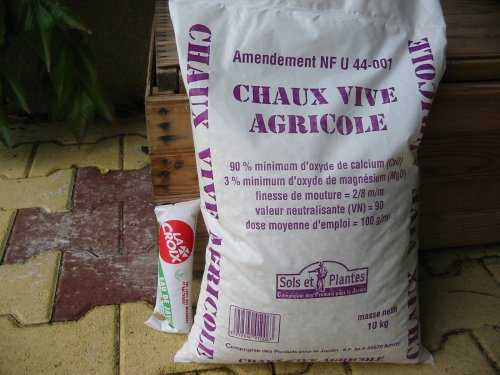 1 - The bleach: 1 - The bleach:
I
don’t preconise the use of chemicals such as the
"Grésil" for example. I prefer to use bleach.
I
use it to disinfect all the material (mangers, tiles, stuck boards,
stakes out of wooden, fabric out of plastic, etc.....). This
disinfecting is pulverized.
The
amount:
I buy bleach by 250 ml, proportioned to
9,6% a.c. (active chlorine) that is to say 36° chl
(chlorometric degree).
The amount that I use is 1,2 °chl.
And
how I make to proportion with 1,2°chl ? (very good question!!!)
- Pour
the 250 ml in one liter of cold water. You thus have 1 liter of bleach
to 9°chl (36/4 = 9)
- Then, apply the good
old rule of three: 9/1,2 = 7,5
- Now
pour your liter with 9°chl in a bucket, and supplement with
cold water to have on the whole 7,5 liters.
Your
mixture is made!! the bleach diluted is unstable and isn’t
effective if is old.
2 - The quicklime:
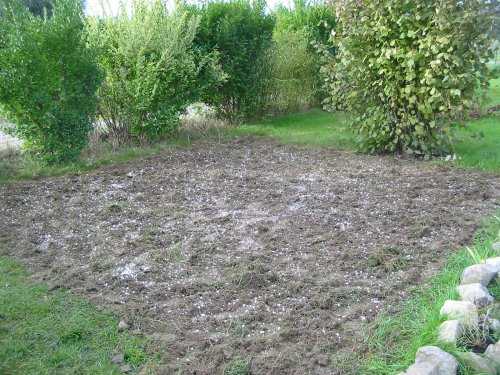
The
quicklime will be widespread on the ground after the park ploughing,
with the amount of 2T/ha (either 200g/m2).
There will be a
second ploughing in spring, before sowing (grass, clover, radish,
etc.....)
|
D - The diseases:
The mycosis
of the layings
The
mycosis of the layings appears because there is an excess of moisture
or a bad quality of compost. The
abnormal colored eggs (pink, clearly, yellow or gray) are dehydrated or
rotted. They should be withdrawn before they contaminate all the batch. 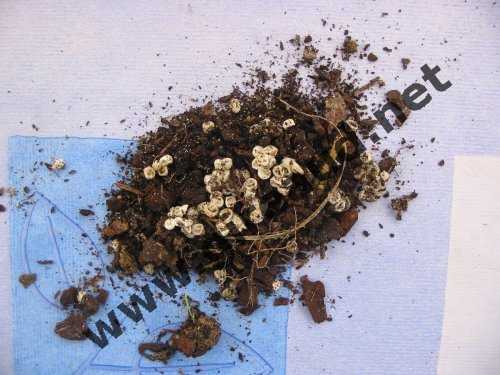 | 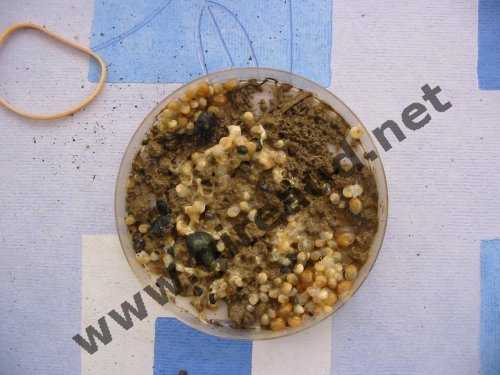 | | Above: a laying desiccated (the
eggs retract) | Above:
a laying with development of mycoses. | 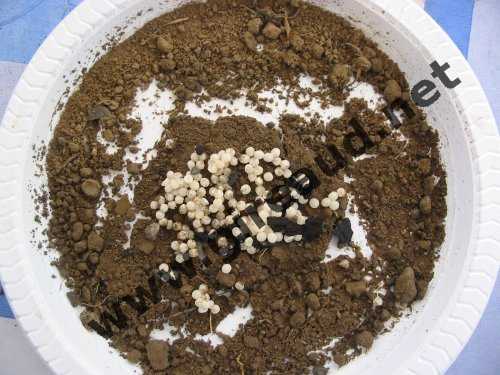 To compare, on the left, a
normal laying. To compare, on the left, a
normal laying. |
|
The 90 days
disease
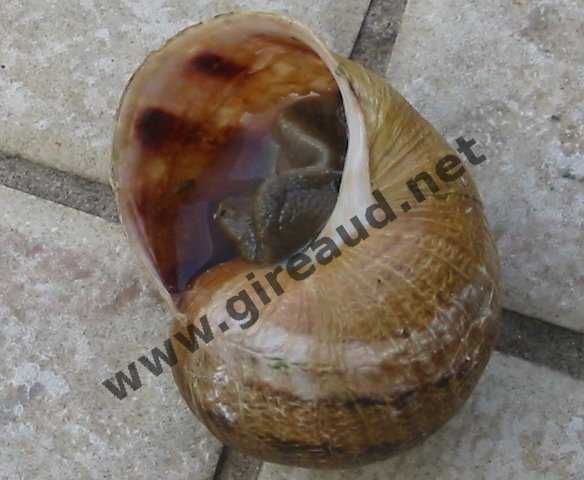
This
disease is not very known to date.
The snails let themselves
die and a light blue liquid invades the shell.
That
"would come" from special snail food containing copper traces which
with the passing years concentrate and generate "the 90 days mortality".
Called
90 days because mortality generally intervenes at this period.
A study
on the total colony count of the helix aspersa
in breeding confirms this copper concentration problem in snail
rearings. If copper seems to be the principal cause in charge, a
bacteriological infection is not drawn aside by the biologists.
Another study
carried out on the contaminated sites raises the heavy metals
accumulation problem in the the snail food.
A
prevention consists in sowing mustard in the fatening parks after
several years of exploitation because the latter fixes copper.
|
E - The accidents:
The
"accidents" arrive from time to time and can come from several causes:
predatory, falls, electrocution, etc....
Useless thus to
panic.....
F -
Conclusion:
Part
conceived and carried out by Jose Matéo (thank you with
him!!!)
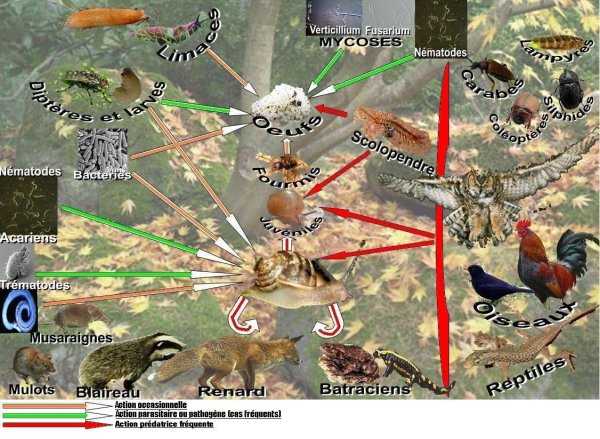 | Are
exposed in these pages the various predators, parasitic and pathogenic
agents that a snail is likely to meet in nature wild state, and
especially, in what imports us, in breeding, as well as the suitable
remedies. In order to make it possible for any snail rearing candidate
to understand that, when there is concentration individuals’,
there is concentration of problems. And is preferable to know first of
all, which allows to anticipate for avoid them and in the worst case
better curing it.
Don’t forget that
hygiene is the best
remedy for all the evils, and that to park its livestock this
isn’t only to deprive they of freedom but also, and
especially,
for protect they from the predatory ones.
Your
snails will thank you !!!
On left: summary of all
that precedes. |
| |





























































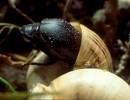


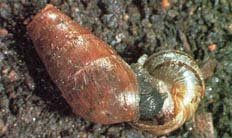
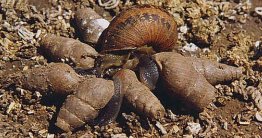
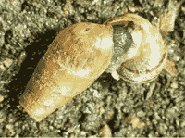








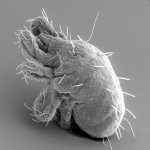
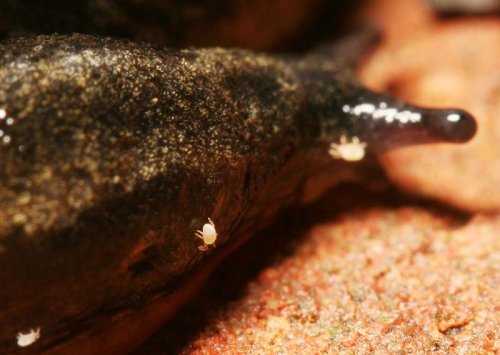
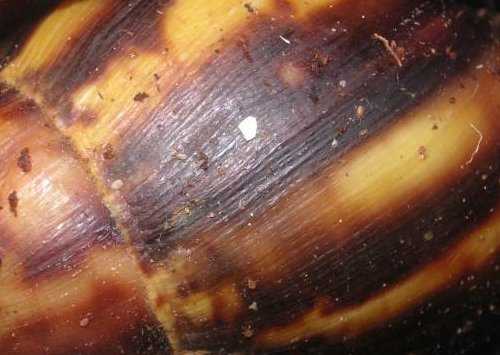
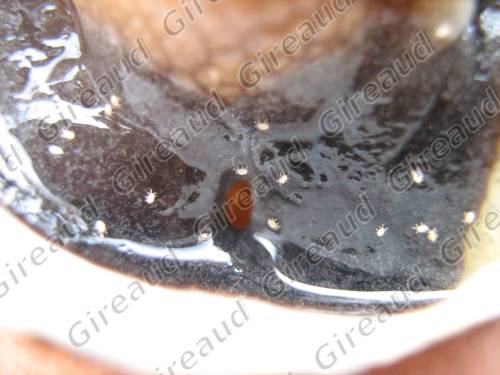
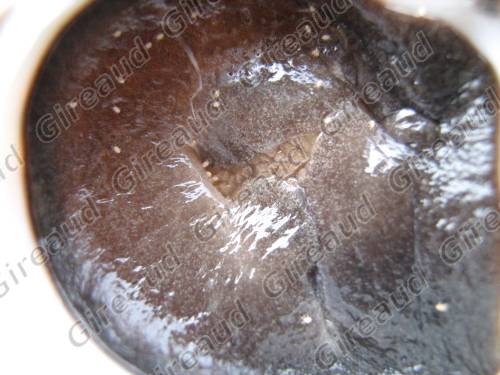

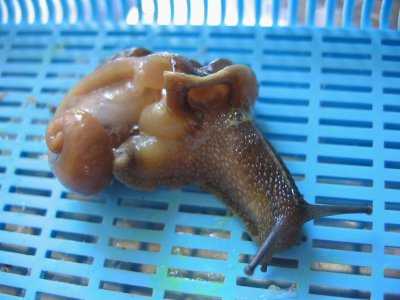
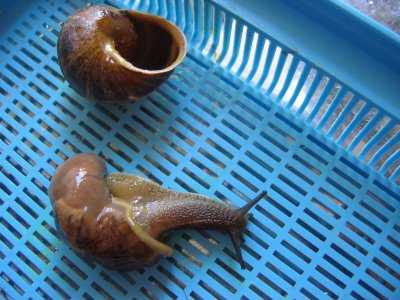
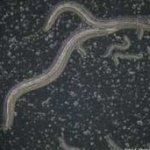






 To compare, on the left, a
normal laying.
To compare, on the left, a
normal laying.
